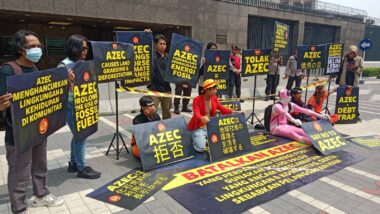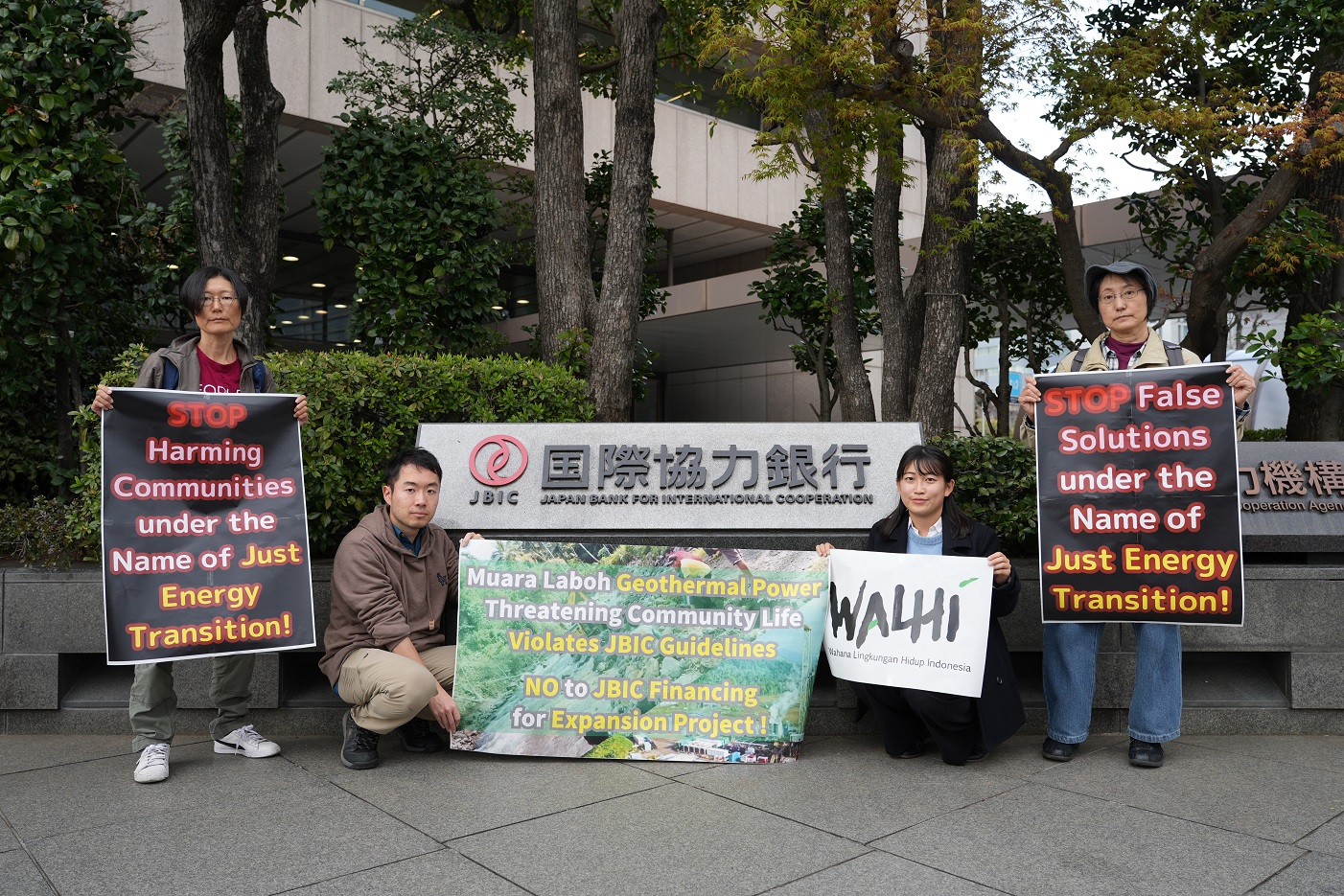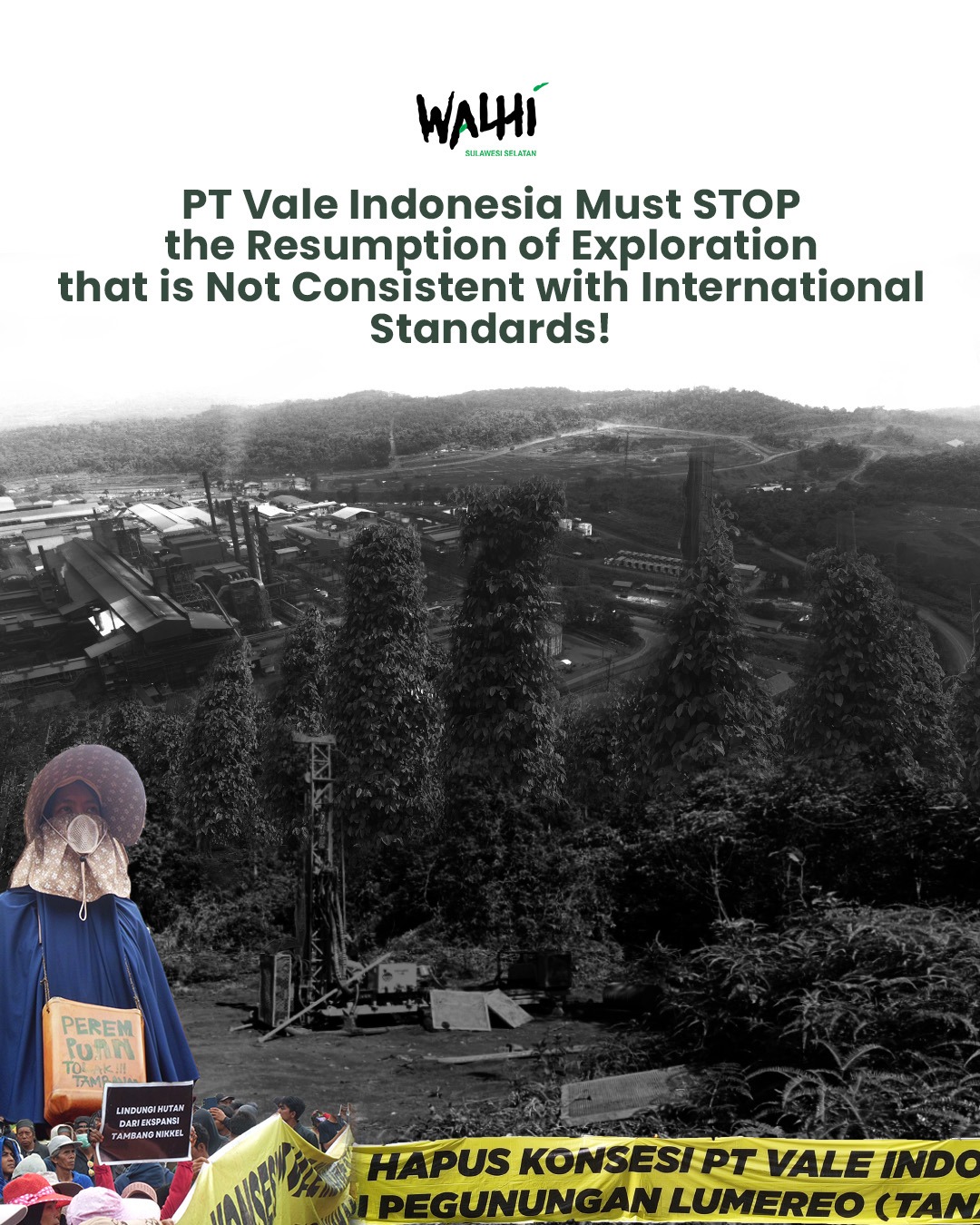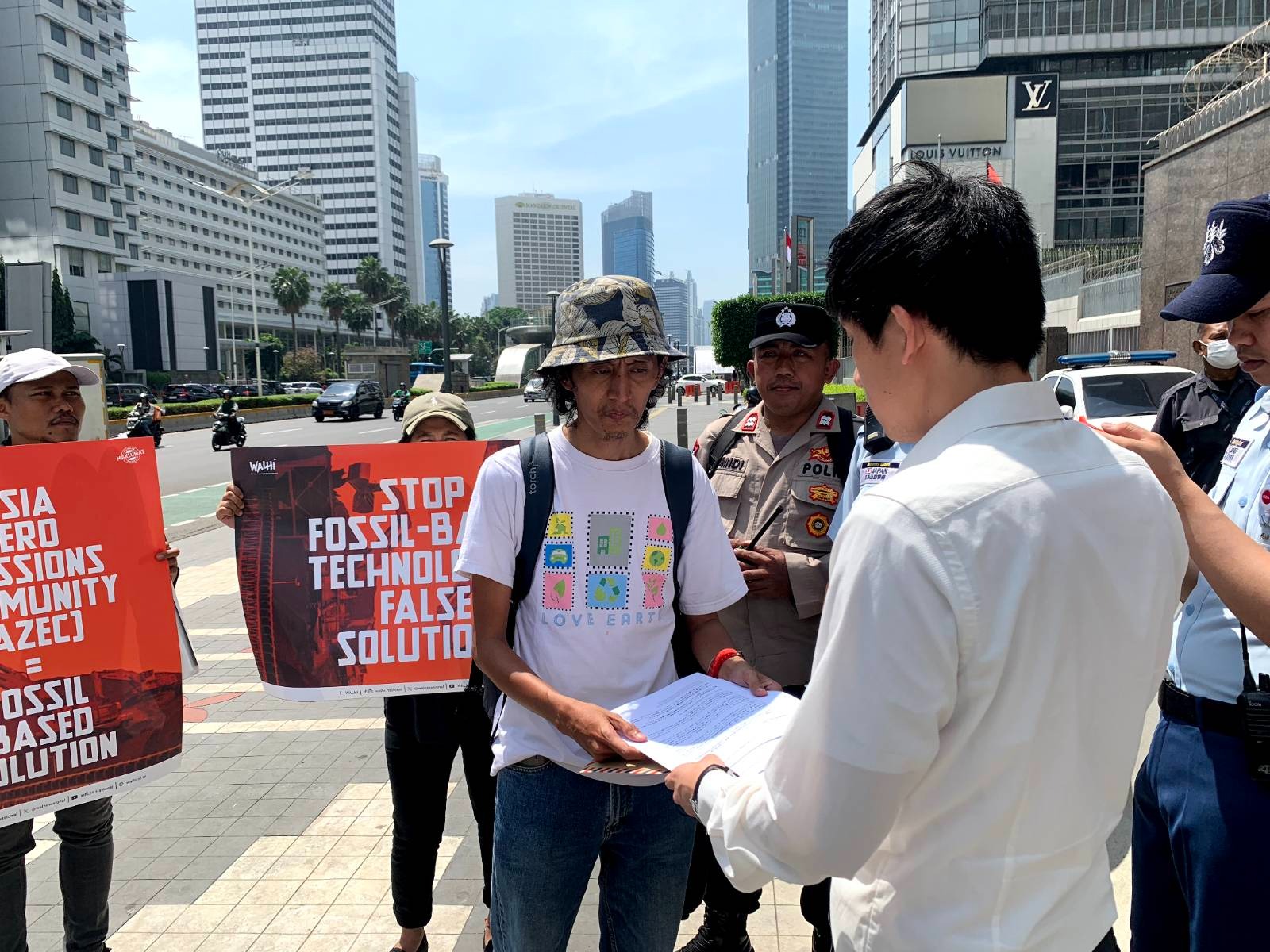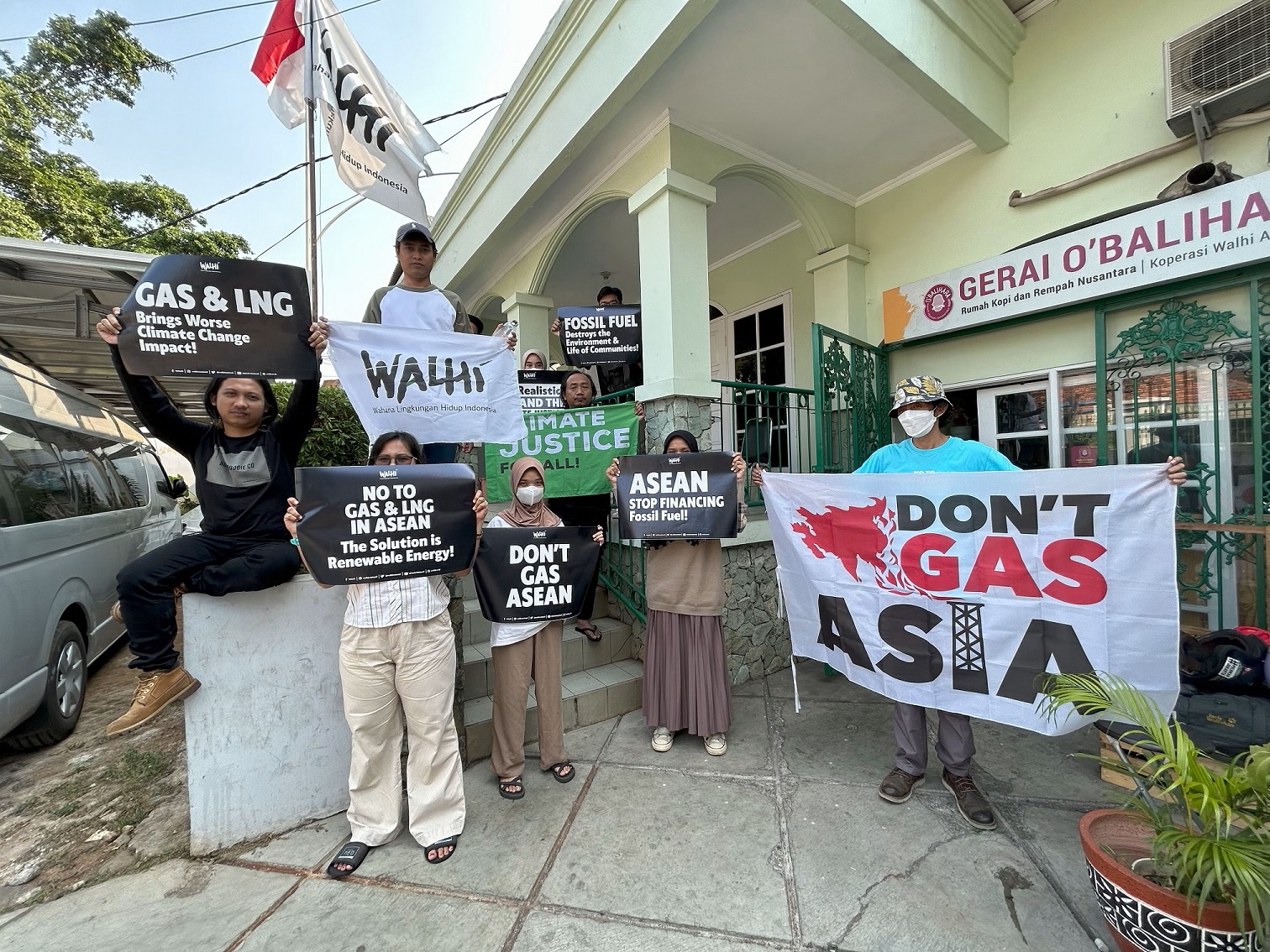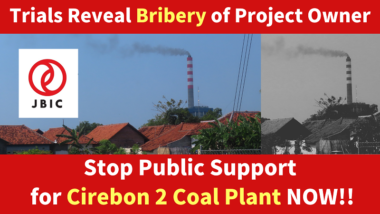[Statement by Indonesian CSOs] The Project Green Ammonia Initiative from Aceh (GAIA) is greenwashing under the guise of energy transition — Japanese public and private sector should halt the project
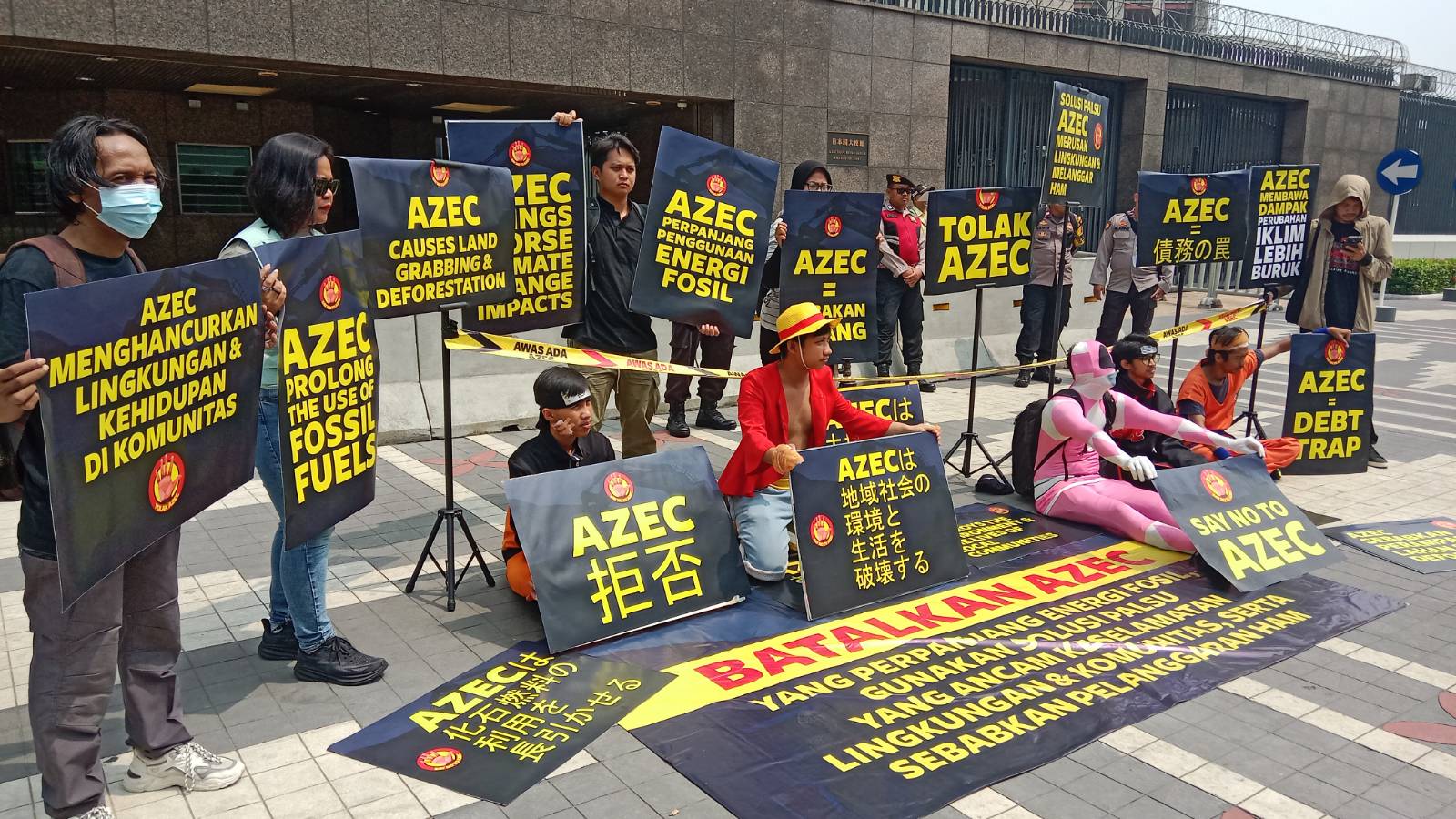
>PDF is available here
*) This English version is an interpretation of the original Indonesian version. If there are any differences in words or sentences, please refer to the Indonesian version
August 12, 2025
Public Statement of Wahana Lingkungan Hidup Indonesia (WALHI) Regarding The Project Green Ammonia Initiative from Aceh (GAIA)
Stop Greenwashing in the Name of Energy Transition: The Project GAIA Will Prolong Dependence on Fossil Energy and Worsen Threats to Environmental and Community Safety
At the 2nd Ministerial Meeting of the Asia Zero Emission Community (AZEC) in Jakarta, August 2024[1], PT Pupuk Indonesia / Pupuk Indonesia Holding Company partnered with ITOCHU Corporation and Toyo Engineering Corporation to sign a Joint Development Agreement for a project officially named the Green Ammonia Initiative from Aceh (GAIA). The project is said to focus on the production of green ammonia by installing electrolysers to obtain hydrogen elements at the ammonia plant owned by PT Pupuk Iskandar Muda (PIM), a subsidiary of PT Pupuk Indonesia located in Dewantara District, North Aceh Regency, Aceh Province, and will also supply green hydrogen claimed to be produced from renewable energy sources.
Since April 2025, the Japan Bank for International Cooperation (JBIC) has also considered financing the GAIA project, categorizing it as “C", which is regarded to have no significant environmental and social impact[2].
However, although the GAIA Project is said to be part of efforts toward carbon neutrality, Wahana Lingkungan Hidup Indonesia (WALHI) assesses that this project actually deviates from efforts to achieve safe climate targets, prolongs the use of fossil fuels, and will further increase environmental damage and threats to community safety.
First, the electricity to be used by the GAIA Project is obtained from the electricity grid system of Perusahaan Listrik Negara (PLN), which is dominated by power plants sourced from fossil energy. PT Pupuk Indonesia, in its response to WALHI’s public information request, stated that the GAIA Project is designed to produce green hydrogen through water electrolysis using electricity from renewable energy sources from PLN, as indicated by the Renewable Energy Certificate (REC) with an estimated capacity of 40 MW.
Electricity in the grid originates from various sources such as coal, gas, fuel oil, solar, and wind—all converging into a single distribution system. This system delivers a mix of energy to consumers without distinguishing its origin. Therefore, even though consumers receive REC from certain providers such as PLN, in practice, the electricity they use comes from various types of power plants—not from purely renewable energy sources. Furthermore, there is no guarantee or open audit available to transparently verify the origin of the electricity supply.
If we look at the installed power plant capacity in Aceh Province, as well as in the entire Sumatra region, as listed in the 2023 Electricity Statistics[3] published by the Directorate General of Electricity, Ministry of Energy and Mineral Resources in 2024, we can see that fossil energy dominance remains very high. If we consider the total generation capacity in the Sumatra system, we can see that 80% of its power plants are sourced from fossil energy. However, if we consider only the installed generation capacity in Aceh Province, we can see that 98% of its power plants are sourced from fossil energy.
Although the GAIA Project claims to use renewable energy based on Renewable Energy Certificate (REC), this does not eliminate the fact that the electricity supplied to the Ammonia Plant comes from the PLN grid, which is predominantly generated from fossil energy power plants, and therefore the green claims of hydrogen and ammonia production have no foundation.
Secondly, the ammonia produced by the GAIA project is still partially sourced from fossil gas and therefore cannot be claimed as green ammonia. In its response to WALHI’s public information request, PT Pupuk Indonesia stated that the GAIA Project is designed to produce hybrid green ammonia by injecting green hydrogen into the existing ammonia plant facilities. This ammonia is produced through a combination of two hydrogen sources: green hydrogen generated through water electrolysis using renewable energy sources, and gray hydrogen derived from fossil gas processing.
Furthermore, If PT Pupuk Indonesia continues to produce ammonia for fertilizers and gray ammonia at the existing ammonia plant at the current scale while also producing hybrid ammonia for the GAIA project, the use of fossil gas may in fact increase.
The statement that the GAIA Project will still use gray hydrogen from fossil gas processing indicates that this is not truly a green and renewable project. The public must be vigilant against potential greenwashing, where energy projects are claimed to be environmentally friendly while still relying on legacy systems that cause pollution and environmental degradation.
The fact that the GAIA Project will continue to use electricity from PLN’s grid, which is still mixed with fossil-based power sources, and that its production process will still rely on fossil gas processing, shows that the project may increase gas consumption and prolong the fossil energy use in Indonesia.
Thirdly, the GAIA Project is being implemented without transparency and meaningful participation from communities around the project site. Based on WALHI Aceh’s monitoring, local communities near the project site have never received comprehensive explanations regarding the environmental, social, and economic impacts of the GAIA Project. Even civil society groups actively engaged in environmental advocacy have not received adequate information about the planning and ongoing processes of the GAIA Project. Although there was a press release[4] from PIM and its parent company, PT Pupuk Indonesia, the release merely announced the project as part of decarbonization efforts and the transition to clean energy, without providing any explanation of the potential environmental, social, and economic impacts.
Transparency and meaningful public participation are essential components of any development project that directly affects the environment and communities. When project-related information is not widely disclosed and no space is provided for affected communities to engage in dialogue, the result is the marginalization of local voices that should be central to decision-making processes.
Fourthly, the GAIA Project has the potential to prolong and worsen threats to community safety and environmental sustainability around the project area. The GAIA Project is said to be implemented at the ammonia plant owned by Pupuk Iskandar Muda (PIM), a subsidiary of PT Pupuk Indonesia located in Dewantara District, North Aceh Regency, Aceh Province. According to WALHI Aceh’s records, as shown in the attachment, between 2010 and 2025, there have been nine incidents of ammonia gas exposure from PT Pupuk Iskandar Muda in Dewantara District, North Aceh Regency, affecting approximately 2,000 residents. Victims were spread across Tambon Baroh, Tambon Tunong, and Uteun Geulinggang villages, with common symptoms including nausea, vomiting, dizziness, shortness of breath, and fainting. Among them, dozens of residents—including children, women, infants, and the elderly—required intensive hospital care, especially during major incidents in April 2010, March 2015, and January 2023. Most gas leaks were caused by valve failures, pipe leaks, or technical malfunctions in the ammonia production unit. This recurring pattern indicates weak industrial safety systems and high risks borne by surrounding residents. WALHI Aceh’s observations show that, to date, there has been no adequate and systematic accountability from the company regarding these ammonia gas leak incidents.
The GAIA Project, which is claimed to be part of Indonesia’s transition to clean energy, raises serious questions about the validity of its green claims, its commitment to community safety, and the integrity of its participatory process. Reliance on a power grid that is still predominantly fossil-based, the use of fossil gas in production components, the absence of transparency toward affected communities, and the high risks to community surrounding the ammonia plant site due to the potential impact of ammonia leakage, demonstrate that the GAIA Project is merely greenwashing, and one of the false solutions, which have been aggressively pushed under the AZEC[5].
This situation becomes even more concerning as, beyond PT Pupuk Iskandar Muda (PIM), which serves as a pilot project for green hydrogen and ammonia development, Pupuk Indonesia and its subsidiaries are also developing green hydrogen and ammonia projects at other facilities, including Pupuk Kaltim, Pupuk Kujang, Petrokimia Gresik, and Pupuk Sriwidjaja Palembang. If these projects continue to rely on fossil energy for electricity and production processes, lack transparency toward affected communities, and disregard community safety aspects, then the expansion of green hydrogen and ammonia projects to other locations will likely amplify negative impacts and increase environmental and social risks.
If energy transition is truly to bring systemic change, then projects like GAIA must adhere to the principles of ecological justice, information transparency, and active community involvement as key actors. Without these, the project will only prolong and worsen inequality and threats to environmental safety and the lives of local communities, rather than being a step forward toward a sustainable future.
Therefore, WALHI calls on corporations, investors, and financiers involved in the GAIA Project to halt this initiative, as it fails to meet the principles of ecological justice, information transparency, and democracy. This project is nothing more than a form of greenwashing that prolongs dependence on fossil gas, endangers community safety, and neglects the rights of communities to participate and access transparent information in development processes that affect their environment and life.
Signatories of the Statement
- National Executive of Wahana Lingkungan Hidup Indonesia (WALHI) / Friends Of The Earth Indonesia
- Regional Executive of WALHI Aceh
Contact:
Wahana Lingkungan Hidup Indonesia (WALHI/Friends of the Earth Indonesia)
Address: Jl. Tegal Parang Utara No 14, Jakarta Selatan 12790. INDONESIA
Email: informasi@walhi.or.id
Tel: +62-21-79193363
Attachment
Ammonia Leakage Incidents at PT Pupuk Iskandar Muda Documented by WALHI Aceh
| No. | Date of Incident | Description |
| 1 | 28 April 2010 | An estimated 975 residents of Tambon Tunong Village and two neighboring villages in Dewantara Subdistrict, North Aceh Regency, were affected by ammonia gas released from PT Pupuk Iskandar Muda. Symptoms included vomiting, shortness of breath, and fainting. Twelve individuals required intensive care at Kesrem Hospital in Lhokseumawe due to acute respiratory distress. |
| 2 | 22 September 2011 | Approximately 90 residents of Tambon Baroh Village, Dewantara Subdistrict, North Aceh Regency, were hospitalized at PIM Hospital after inhaling ammonia gas, resulting in respiratory issues. The incident occurred around 19:30 WIB and was suspected to be caused by a valve malfunction. |
| 3 | 30 September 2011 | Over 100 residents of Tambon Baroh Village were rushed to PIM Hospital due to ammonia gas inhalation. Several individuals collapsed while fleeing and required supplemental oxygen. The leakage was caused by an open valve in Ammonia Unit I. |
| 4 | 18 December 2011 | A leak and fire in the gas pipeline to the ammonia production unit led to mass exposure. Hundreds of residents were hospitalized, with 12 requiring intensive care due to toxic gas inhalation. |
| 5 | 27 March 2015 | Around 400 residents in Dewantara Subdistrict suffered poisoning from ammonia gas exposure. Most victims were women and children. Specifically, 371 residents from Tambon Baroh and 29 from Tambon Tunong were affected. The incident occurred around 14:00 WIB. |
| 6 | 12 November 2016 | Dozens of residents from Tambon Baroh and Tambon Tunong were hospitalized after inhaling ammonia gas. While at home, they suddenly smelled the gas and experienced dizziness, nausea, vomiting, and fainting. |
| 7 | 15 November 2018 | Thirty-three residents living near PT Pupuk Iskandar Muda reported symptoms of dizziness, nausea, vomiting, and shortness of breath due to ammonia exposure. Seven residents from Tambon Baroh were hospitalized. |
| 8 | 6 January 2023 | A strong odor suspected to be ammonia affected residents of Dusun 1, Tambon Baroh Village. Over 100 residents from Tambon Baroh, Tambon Tunong, and Uteun Geulinggang experienced nausea, vomiting, and respiratory distress, including infants and the elderly. Several were treated intensively at PT Arun Hospital in Lhokseumawe. |
| 9 | 6 January 2025 | Ten residents of Tambon Baroh Village experienced nausea and vomiting after suspected exposure to ammonia gas from PT Pupuk Iskandar Muda. Victims were immediately taken to PT PIM Hospital, a subsidiary of PT Pupuk Indonesia in Krueng Geukuh, North Aceh Regency. |
[1] Pupuk Indonesia Kembangkan Proyek Amonia Hijau Hybrid Pertama Di Dunia. https://pupuk-indonesia.com/media-info/detail/570/pupuk-indonesia-kembangkan-proyek-amonia-hijau-hybrid-pertama-di-dunia
[2] Production of Green Hydrogen and Ammonia. https://www.jbic.go.jp/en/business-areas/environment/projects/page_00481.html
[3] Statistik Ketenagalistrikan 2023. https://gatrik.esdm.go.id/assets/uploads/download_index/files/e6394-buku-statistik-ketenagalistrikan-2023-esdm-revised.pdf
[4] https://pim.co.id/pojok-media/press-release/dukung-program-dekarbonisasi-yang-diinisiasi-pemerintah-pt-pupuk-iskandar-muda-segera-implementasikan-green-dan-blue-ammonia (2022); https://pim.co.id/pojok-media/press-release/penandatanganan-mou-pembangunan-pabrik-green-hydrogen-di-imia (2023); https://pim.co.id/pojok-media/press-release/green-ammonia-project-site-visit-to-propose-location (2024). The press release issued by PT Pupuk Iskandar Muda only highlights the positive impacts of the GAIA project, without addressing the risks or potential negative consequences that may arise
[5] Koalisi Masyarakat Sipil Indonesia Tuntut Pemerintah Jepang Hentikan Inisiatif AZEC Yang Penuh Upaya Greenwashing. https://www.walhi.or.id/koalisi-masyarakat-sipil-indonesia-tuntut-pemerintah-jepang-hentikan-inisiatif-azec-yang-penuh-upaya-greenwashing
